Last week, three Cinereous Vultures (Aegypius monachus) that have been in acclimatisation aviaries in Verdon (France), after being rescued and rehabilitated, ventured again into the wild. Among them was Zappa, a French wild-hatched Cinereous Vulture that was found in a weak condition at the beach in Sicily, in 2021. Zappa spent some months at the Wildlife Rescue Centre in Messina, in rehabilitation from lead poisoning. An inspiring story that stresses the importance of international collaboration in ensuring the conservation of this threatened species in Europe!
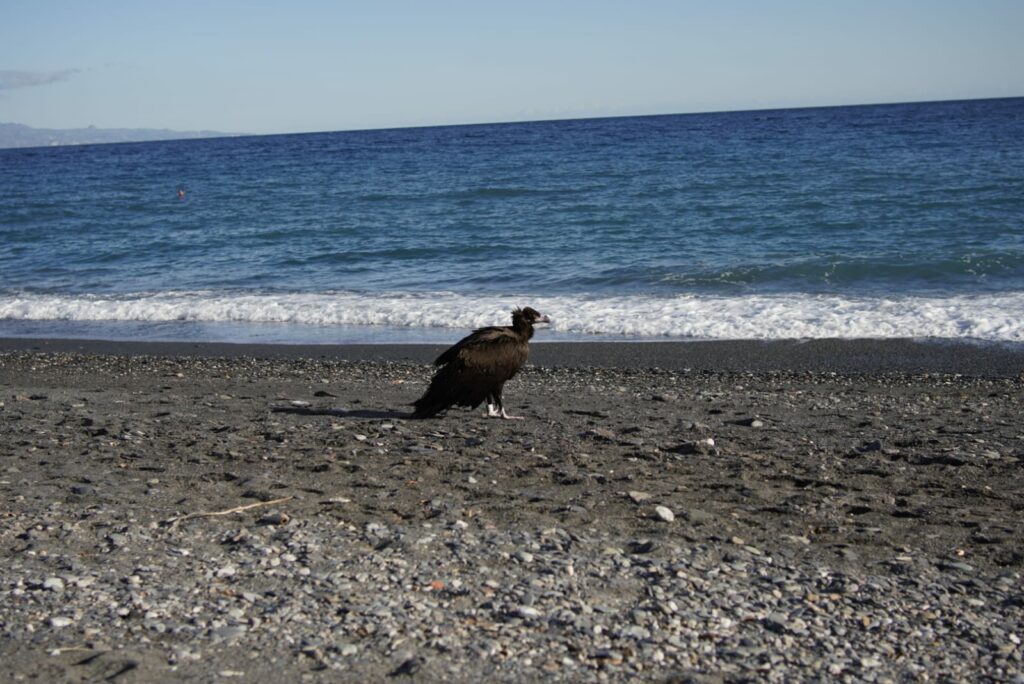
Zappa, a wild-hatched Cinereous Vulture that ventured (very far) south
Zappa hatched in the wild in Tarn Gorges, a valley halfway from the Grands Causses Nature Regional Park and the Cévennes National Park. He was ringed in the nest on 22 June 2021, where he stood until the end of September. In the following weeks, Zappa was seen at the Méjean Causse feeding station and in Crau, where he became the third Cinereous Vulture spotted in the area during the last century.
According to LPO, in the Grands Causses, Cinereous Vulture chicks seem to remain in the area where they fledged for about two months. Still, some juveniles have been spotted around their nests in December and January, meaning some take up to 5 months before venturing into wilder adventures. It was not the case for Zappa, as in December 2021, he was spotted in a fragile condition at the seashore in Sicily, at Santa Teresi di Riva beach, probably exhausted after crossing the Strait of Messina.
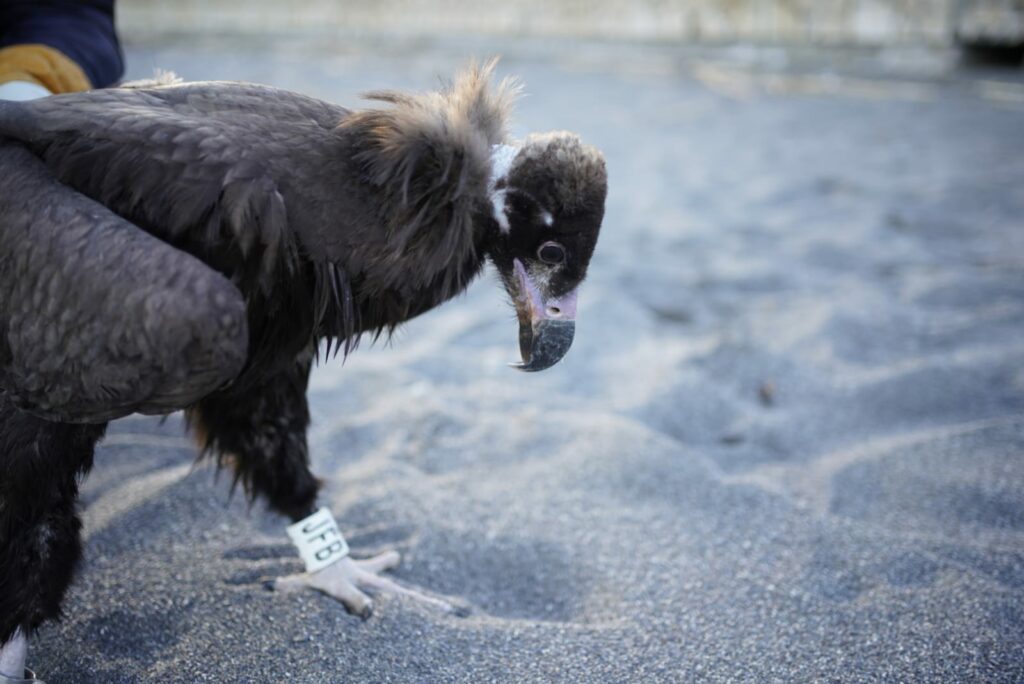

What was wrong with Zappa?
Finding a bird in distress at the beach is never a good sign. Thankfully, he did not venture to the sea, as many others do (and eventually, cannot stand the journey). Zappa was not GPS-tagged, so we do not know his exact moves until he reached eastern Sicily. On 15 December 2021, he was rescued and transported to the Wildlife Rescue Center close to Messina, managed by the Mediterranean Association for Nature (MAN) under an agreement with the Regional Forestry Department. Zappa’s condition was worrying; the bird was weak, weighing only 6,2 kg, way below the usual standards for adult males (6.8-11.8 kg, females weighing 7.3-12.7 kg).
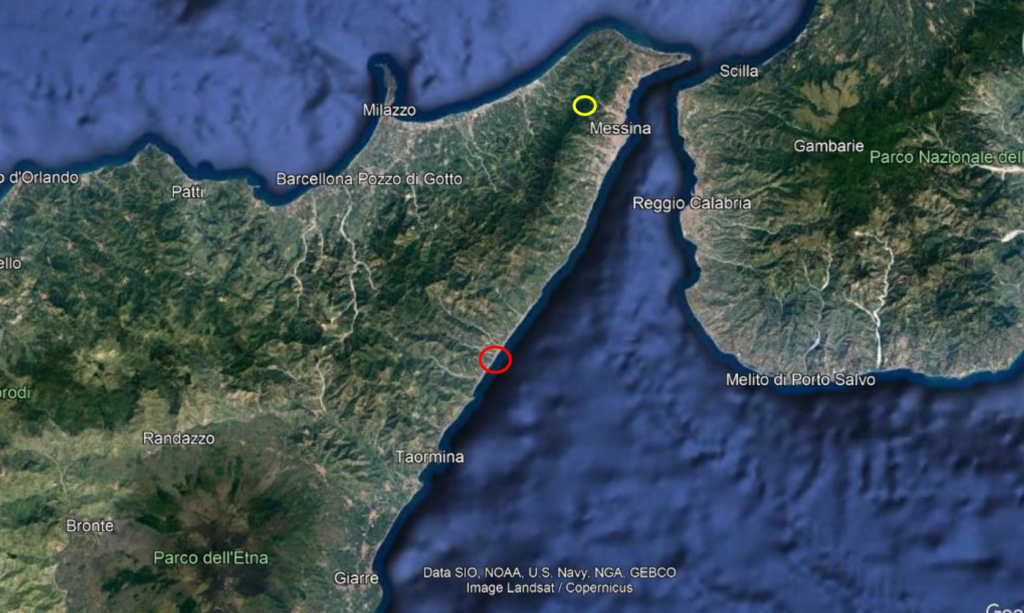
In red, the place where Zappa was found, in yellow, the location of the Messina Wildlife Rescue Center
After investigating the potential causes of his poor health condition, the team at the Wildlife Rescue Center found out Zappa was suffering from saturnism (lead-poison intoxication). The team was ready to start his rehabilitation from lead poisoning. Lead is a toxic compound that can cause general weakness (gastrointestinal, renal, urinary, and nervous systems and fertility problems), leading to gradual weight loss or even death in acute poisoning cases. As lead is not eliminated from organisms, its impacts span across the trophic chain, a phenomenon called bioaccumulation. Scavenger birds, as the clean-up crew of our ecosystems, are also indirectly contaminated by lead accumulated in the animals on which they feed.
The rehabilitation of Cinereous Vulture Zappa from saturnism
Zappa was submitted to therapy to reduce lead intoxication and gradually started to put on some weight, feeding regularly and recovering from his condition. Many organisations and experienced technicians working with Cinereous Vulture and lead poisoning events, gave important treatment recommendations to the crew at the Wildlife Rescue Center. The Stiftung Pro Artenvielfalt – Foundation pro Biodiversity was also important in supporting the bird’s recovery.
For us, the arrival of Zappa has been a great surprise! For 43 years, we have been involved in fighting the illegal shooting of raptors and storks migrating through the Strait of Messina. In all these 40 years of monitoring migration, a Cinereous Vulture has been seen…once!
Anna Giordano, Messina Wildlife Rescue Center
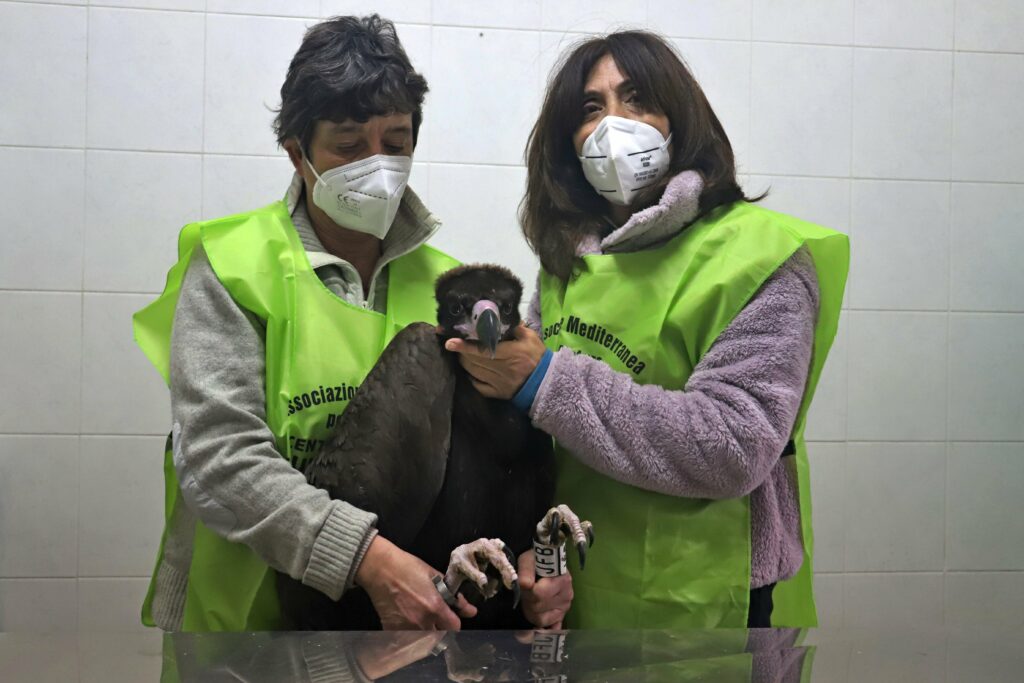



Thousands of raptors and storks were killed during spring migration across the Messina Strait despite the national and regional laws forbidding it. In 1989, volunteers opened the first wildlife rescue centre in Messina, assisting 132 different species until now, despite the increased number of species and individuals each year, the number of birds that were shot has decreased.
Rehabilitated and returned to France
When Zappa finally reached 8,85 kg of weight, and the lead poison levels were low, the Wildlife Rescue Centre team started preparing the legal aspects to transport him back to France. On 30 March 2022, Zappa travelled 1.344 km by car across Italy, with the Italian team concerned about whether the bird would survive such a long road trip. The bird arrived safely and was welcomed by the team at the LPO Provence-Alpes-Côte d’Azur (LPO PACA). Since then, Zappa stood in the acclimatisation aviaries in Verdon.
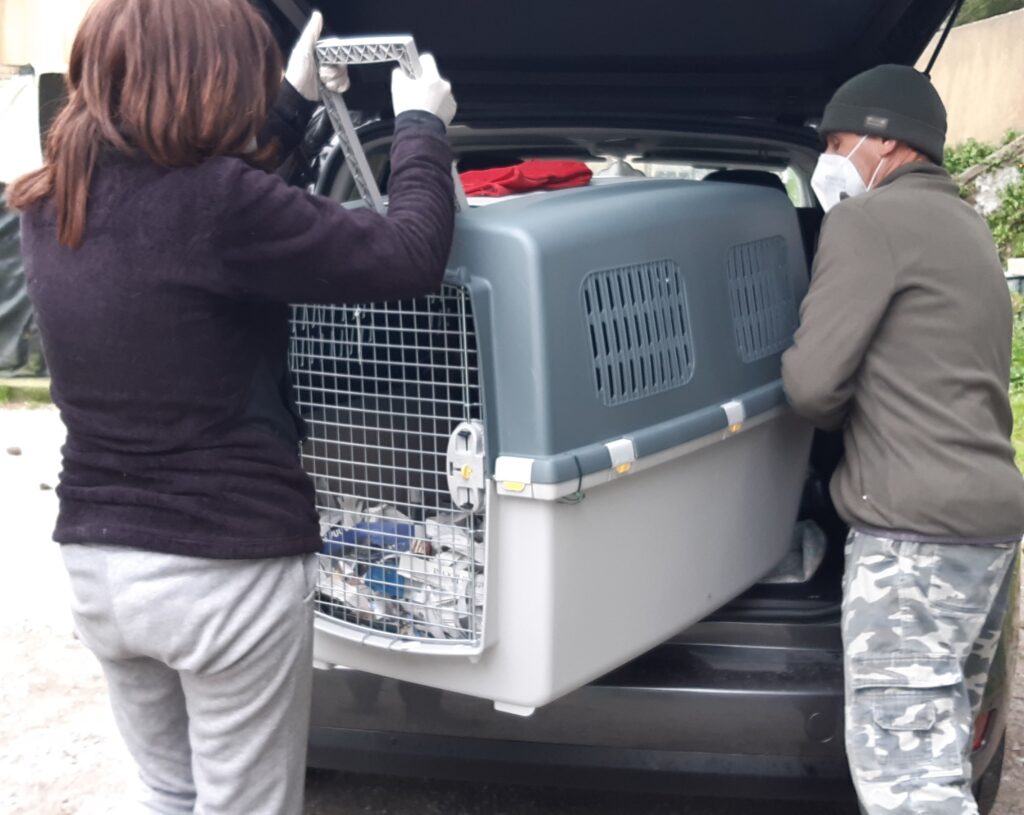

Cinereous Vultures Zappa, Argus and Mélitée released last week in Verdon
Once Zappa entered the acclimatisation aviaries in Verdon, he was not the first Cinereous Vulture there, as Argus and Melitée were there as well. The male Argus, whose origin is unknown, was born in 2020. He was found in a weakened state in Lot (France) and transported to Tonneins Wildlife Rescue Centre (Lot) to be rehabilitated. Argus entered the Verdon acclimatisation aviaries in October 2020. Mélitée, a female born in the same year, also origin unknown, was rescued in Banuyls (Pyrénées Orientales) on 10 October. The bird was rehabilitated at the LPO Hérault Rescue Centre in Villeveyrac and transferred to the Verdon acclimatisation aviaries in December 2020.
In July, the team at Verdon fitted a GPS transmitter in each Cinereous Vulture and finally opened the doors of the aviaries, so Zappa, Argus and Mélitée could finally venture into the wild again. Sheep legs were placed outside the aviary as bait to convince them coming out. Zappa and Mélitée ate the bait and made their first flights on 7 July. Argus, on the other hand, stood in the aviary.
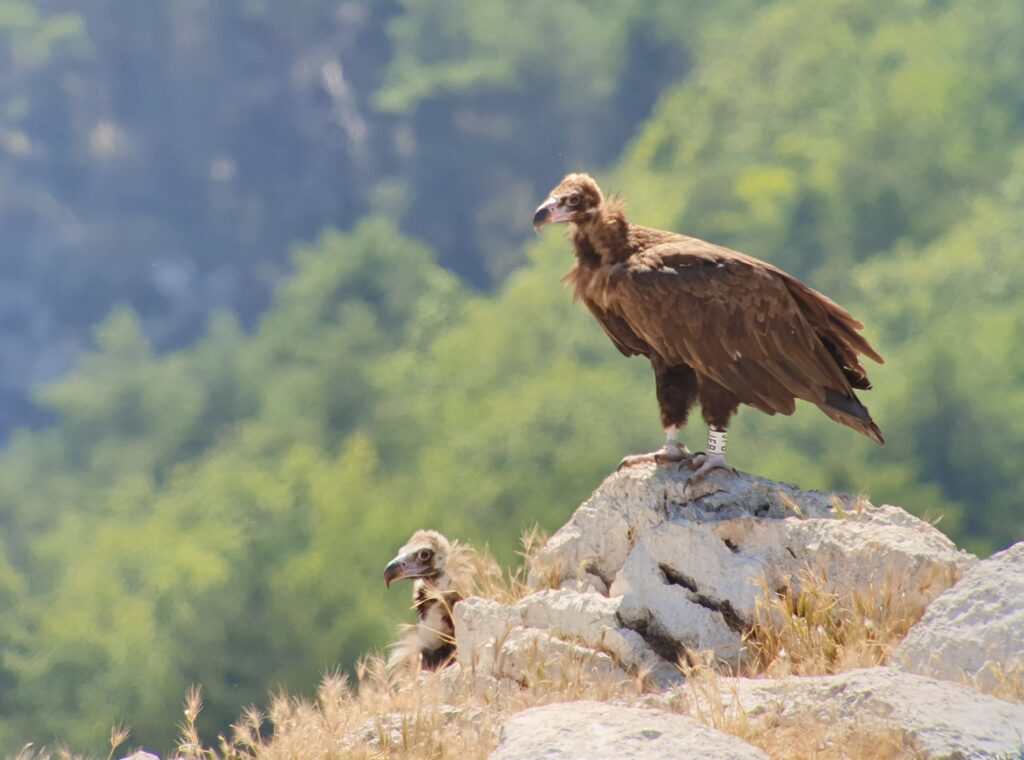

So far, Zappa seems to be the most adventurous, flying around the canyon, while Mélitée didn’t go much further from the aviary. Some days ago, all three were seen feeding at a feeding station with other Cinereous and Griffon Vultures (Gyps fulvus), but Argus returned to the aviary. We hope Zappa, Argus and Mélitée enjoy their regained freedom and live long in the wild!
Collaboration across borders to save vultures in Europe
The story of Zappa’s recovery is an inspirational example of how international cooperation plays a pivotal role in safeguarding European vulture species. The migratory nature of vultures goes beyond political borders, collective efforts and cooperation among countries are thus fundamental to ensure their conservation, rescue and rehabilitation. Fortunately, success stories of international cooperation are frequent within vulture conservation. Recently, a Bearded Vulture introduced in the Grands Causses was rescued by a German organisation and released back in France!
Many thanks to all those involved in rescuing, rehabilitating and transporting Zappa back to France, namely Anna Giordano and Deborah Ricciardi (from the Messina Wildlife Rescue Centre), the veterinaries Fabio Grosso and Michel Montini, Enrico Bassi (Advisory board of the Vulture Conservation Foundation), Sylvain Henriquet (LPO Provence-Alpes-Côte d’Azur), Renaud Nadal (LPO), Marleen Huyghe and Àlex Llopis (Cinereous Vulture EEP).